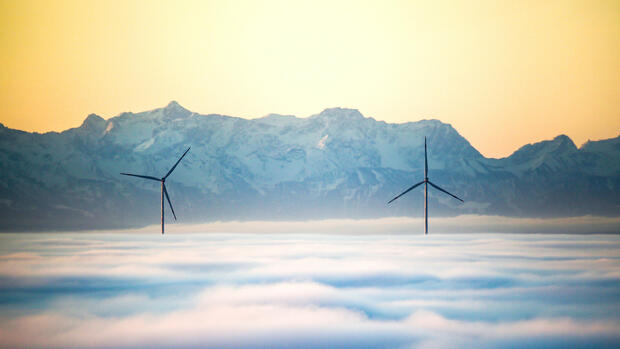The expansion of wind power in Germany is progressing – albeit not as quickly as planned by the federal government. But the manufacturers of the wind turbines are currently only making losses.
(Photo: dpa)
Munich Wind power is an attractive growth industry. In the first half of the year, 331 plants with a cumulative output of 1565 megawatts were installed in Germany alone. This is not enough to achieve the federal government’s goals for 2030. But at least the addition already corresponds to two thirds of the value in the entire previous year.
Experts are also anticipating double-digit growth rates worldwide over the next five years. No wonder that many want to make money from the boom. Corporations such as BP and Total Energies have just bid 12.6 billion euros in the world’s largest tender for land for offshore wind farms – just for the right to build wind farms in the North Sea and Baltic Sea.
But at the beginning of the chain, the manufacturers of the wind turbines, such as Siemens Energy and Vestas, burn billions. The companies themselves are to a large extent to blame for the disaster. In the end, three things went wrong.
First: For years, the industry agreed to contracts that did not provide for price escalation clauses. When the cost of steel, for example, skyrocketed, buyers were pleased that the prices for the wind turbines were set years before acceptance. The manufacturers, however, were left with the significantly higher costs. Siemens Energy and Co. are still working through such old contracts, which are now in deficit.
Second, under pressure from the markets, the industry has engaged in a technology race. The wind turbines had to get bigger and more powerful. That leads to the load limits.
Massive quality issues
Since new model generations were also being introduced at short intervals, there was little time to extensively test and optimize the systems. Even with production – the lines have to be constantly redeveloped for new model generations – the manufacturers can’t keep up.
This effect is also likely to have contributed to massive quality problems at Siemens Gamesa, which burden the Siemens Energy Group with billions.
And thirdly, it would be too easy to continue to blame the problems on market mechanisms. There must have been serious omissions at Gamesa – both in development and in testing during the course of the complete takeover by Siemens Energy. These must be clarified.
In the value chain, however, all companies must be given the chance to survive. Even if this leads to higher prices for wind turbines, for example. The industry, in turn, has an obligation to deliver reliable products. It is manageable if a breathing space is necessary for the model generations.
In the energy transition, Europe needs a strong wind power industry to avoid new dependencies. Many mistakes were made in photovoltaics. These must not be repeated elsewhere.
More: Siemens Energy has come under fire for dealings with Rosatom
